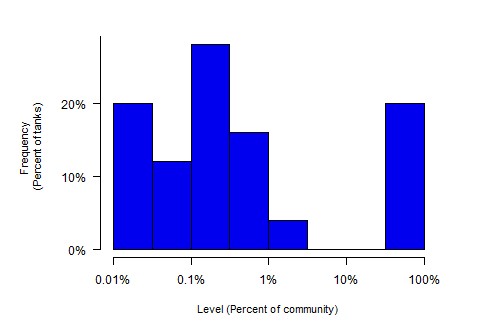Summary
Sometimes called Marine White Spot Disease or Marine Ich.
The disease is caused by a ciliate parasite (Cryptocaryon irritans) which attaches itself to the fish’s gills, fins, and skin, causing irritation, inflammation, and ultimately, death if left untreated. The parasite’s life cycle includes a free-swimming stage, during which it infects new hosts, and a parasitic stage, during which it attaches to and feeds on the host fish. This is an obligate parasite that must infect a fish host to complete its development.
Symptoms
- Fine white spots, usually about 0.5 mm in diameter, on the skin, gillis, and fins.
- Behavioral changes including reduced feeding, increased hiding, lethargy.
- In some cases, ragged fins, cloudy eyes, and pale gills may be visible.
- Mortality may occur within days of emergence of symptoms, although chronic infections in some systems can persist long term
Causes
This disease is caused by ciliate called Cryptocaryon irritans. There is some genetic and phenotypic variation among isolates but currently all variants are considered to be a single species.
C. irritans is widely distributed in tropical and sub-tropical marine habitats, and is widespread in the aquarium hobby.
Prevalence in the hobby
This is the second most common group of parasites we encounter in clients’ samples. This does not necessarily reflect its true prevalence in the hobby, since the set of tanks we’ve tested is not a random subset of the total.


Treatments
This disease can often be treated with immersion treatments in a dedicated quarantine or hospital tank. Treatments include:
- Copper – immersion treatment using copper sulfate.
- Formalin immersion
- Chloroquinine phosphate immersion
- Hyposalinity
For extreme cases antibiotics may also be recommended to guard against secondary bacterial infections.
Because this parasite requires a fish host to complete its life cycle, fallow treatments can be an effective way of ridding a tank of Cryptocaryon. This discussion is an excellent resource for aquarists considering a fallow period.
Additional Resources
Testing for ciliate parasites
Because this disease often causes visible symptoms before it kills, you may not need a test to diagnose an existing infection. But is the tank infected? Are the other fish at risk? These questions require testing.
Check your tank for Cryptocaryon today using the tankDNA test!
